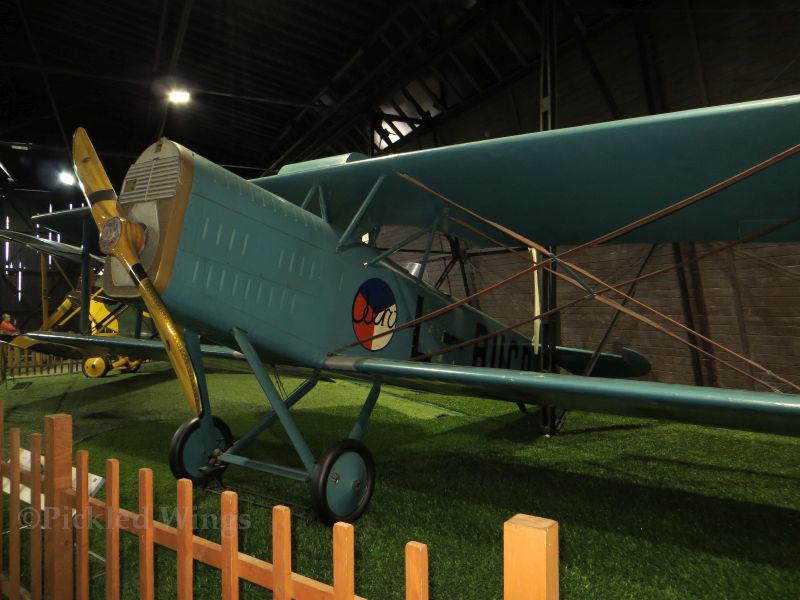Aero Ascending
As the clouds of the First World War cleared, the newly born and independent Czechoslovakia quickly showed itself to be an ambitious nation with well established talent pools in aviation as well as many other fields.
Founded in 1919, the year following the establishment of Czechoslovakia, Aero is one of the oldest of Czech aircraft manufacturers. The Aero name is branded upon many legendary Czechoslovak aircraft designs from the interwar period up to the present day. Surviving the Second World War as well as the rise and fall of Socialism, Aero is still very much in the aircraft manufacturing business today and is busy making components for foreign aircraft as well as still making full aircraft of their own design.
Along with the Avia and Letov companies, Aero formed the foundation of the young nation’s aviation industry and was a key name in the nation’s interwar aviation developments both civilian and military.
The Aero A.11 was a popular and particularly important aircraft as it served as the basis for no fewer than seven later aircraft types that served the Czechoslovak air force, and a few foreign ones, quite well up to the outbreak of the Second World War.
From Good Stock
The A.11 was a two seat light bomber and reconnaissance aircraft by design that, in spite of numerical order, was developed from Aero’s earlier A.12 design.
The A.12 first flew in 1923 and proved itself to be a popular and reliable aircraft that, with the exception of some engine vibration issues, was not a difficult aircraft to maintain or operate. When the time came to give the Czechoslovak military a new light bomber and reconnaissance aircraft, Aero had a good starting point with the A.12.
Aero co-founder and chief designer, Antonín Husník (1894-1948), was responsible for creating the A.11 from the A.12 and succeeded in improving on the older design. The A.11 first flew in 1925 and versions of it would give dependable front line service to the Czechoslovak air force until the mid 1930s.
The main area of improvement between the A.12 and the A.11 was a change of engine; the German made Maybach engine of 240 horsepower that drove the A.12 was replaced with better engines. Many A.11s built were equiped with versions of the domestically produced Breitfeld-Daněk Perun six cylinder inline engine. Some were also powered by the Walter W-IV, another domestically developed six cylinder inline engine.
With a maximum speed of around 215 kilometres per hour and a range of 750 kilometres, the A.11 had very respectable flight performance for the time and set at least one national speed record during the 1920s.
Perhaps the best testament to the aircraft’s performance and reliability can be taken from an extensive promotional tour in 1926 that saw an A.11 and its crew fly a total 15,070 kilometres across Europe, North Africa and the Anatolian peninsula. The aircraft overflew 26 nations on the tour and spent almost 92 hours airborne with no major issues.
Outside of the Czechoslovak military, the A.11 also served in the Finnish military. The Finns ordered eight examples of the A.11 as an interim aircraft when the Dutch designed and built N.V.I. F.K. 31 failed as a replacement for their aging fleet of French designed Breguét 14 aircraft. As it did in Czechoslovak service, the A.11 proved itself to be popular and reliable in Finn hands. Finland used their A.11 fleet until 1939.
A.11 variants were produced for approximately six years and production totals seem to vary quite a bit depending on the reference source. Aside of the baseline A.11, the aircraft existed in a few variations:
A.11HS
This was the designation for the version exported to Finland. The HS version differed from the Czechoslovak versions by having a 300 horsepower Hispano-Suiza eight cylinder engine.
Ab.11
This was the light bomber version. In the bomber version, the A.11 could carry 200 kilograms of bombs.
A.11N
Night bomber version.
Aš.11
This designation was used for baseline A.11s that were converted to the trainer role after the A.11 was replaced in frontline service with the Czechoslovak military by the Letov Š-328.
The Aero A.11 Today and Learning More
As the interwar period was a time of rapid development in aviation technology and the A.11 came from a small nation, it perhaps should come as no surprize that not only do we not a have a flying example in either restored or replica form; we also don’t have much opportunity to see the type in museum collections.
A very well made replica of an Ab.11 can be viewed at the excellent Kbely museum in Prague, Czech Republic.
If you want to see a real A.11, you will need to make a trip to Finland. A genuine A.11HS is on view in the collection of the aviation museum in Hallinportti in the central part of the country.
There’s not much in the way of English language information out there about the A.11, but the following Czech language links respond well to online translators and will give you more information about the aircraft:
A.11 article at vinar.cz
A.11 article at vhu.cz
This bilingual English/Finn link will tell you a bit about the A.11 in Finnish service:
A.11 article at Ilmailumuseot.fi


